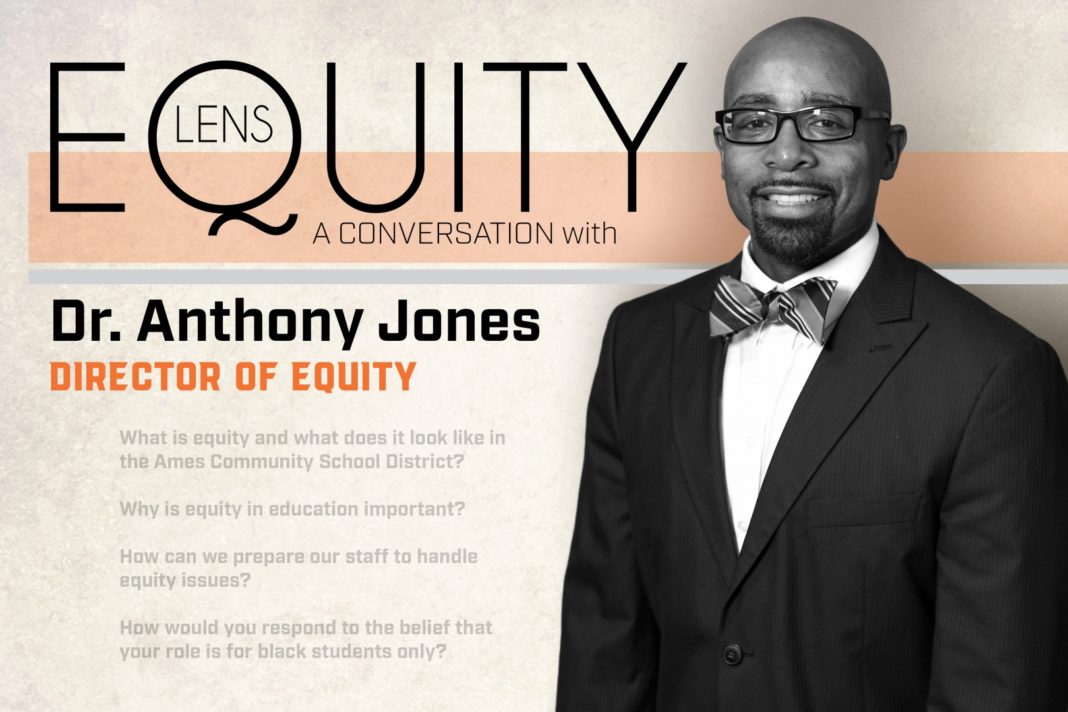Our friends at the Ames School District are continuing their anti-police movement with efforts to rid the district of School Resource Officers. In an odd discussion, the district leaders went out of their way to say the SROs currently in the district are great and noted it isn’t an issue with the Ames Police, but an issue with district administrators.
Despite that concession, the district is seeking to eliminate SROs from its schools.
‘Deliver services in a way that doesn’t include a gun and a badge’
Superintendent Jenny Risner admitted the SROs within the district are “phenomenal,” but added the Equity Committee used “research” and the board should also use the same “research” to make a decision on how to proceed with SROs moving forward.
“What I want to point out tonight is really around the importance of looking at the research,” Risner said at an April 12 board meeting.
The Equity Committee was tasked with looking at the research on the “history and outcomes” of having SROs. Risner said as much as we may want to talk about it, it is “hard” to separate the people from the “whole entire research body that’s here.”
“So, I want to just make sure that what I say is very clear tonight in terms of, we have made a commitment as a district to, with our equity work, to really look at data, but also to look at the research behind that and I would be amiss if I didn’t call to the attention of the board just the, just kind of where we’re at today,” Risner said. “When we started this process, it was very clear that we didn’t have a common philosophy, we didn’t have a common use, none of that was in place for SROs. And, without that, it’s not a good situation.”
However, there is a 28E Agreement between the district and the city of Ames for the SRO program. The Iowa Standard obtained a copy signed by the board president and secretary of the board on May 21, 2019.
Within that signed agreement, there is a list of duties and responsibilities of SROs. Among these duties and responsibilities:
*SROs shall develop friendly contact between the Police Department and the City’s youth.
*SROs shall enforce state laws and local ordinances and coordinate directly with the school principal or designee to provide security during school hours.
*SROs should be familiar with all law enforcement case information pertaining to schools, students and the neighborhood surrounding the campus. They shall engage in effective problem solving and liaison with neighborhoods surrounding the schools, which may be affected by the conduct of students.
*SROs should facilitate and assist with law enforcement investigations involving victims, witnesses and suspects associated with the schools.
*SROs will assist teachers with classroom presentations on relevant topics when requested and able. They’ll work with families, individual students and other school staff members with counseling and guidance efforts when requested and appropriate.
*SROs shall assist district officials in emergency planning and emergency safety and security assessments.
*SROs have a primary responsibility of engaging in relationship building and problem-solving in the school environment.
*SROs shall notify the school counselor of an event if the SRO becomes aware of a traumatic event a student may have witnessed.
*SROs shall not act as a school disciplinarian and shall not take administrative action or levy sanctions on behalf of any district employee.
*SROs shall perform other duties as mutually agreed upon by the school principals and SRO supervisor so long as the performance of such duties is reasonably related to the SRO program as described in this agreement and consistent with PD rules and regulations.
The agreement went into effect July 1, 2019, and is to continue for an initial five-year period unless terminated sooner.
So, while Risner said it “was very clear” the district didn’t have a “common philosophy,” it should have. All it needed to do was read the agreement it signed.
“I have to keep kids first and really think about what are we doing and who is it impacting,” Risner said.
She added the leadership team needs to ask who is benefitting from the situation. And she said the issue is not an issue with the Ames Police Department, but the school district.
“They are phenomenal,’ she said. “This is not about the people. This is about looking at the research and how we align all that we do in this district with our purpose and priorities.”
She recommended the board move in a direction as a district to fo identify what activities the SROs are doing that should be done by district personnel or mental health professionals.
“I think we might be able to deliver services in a way that doesn’t include a gun and a badge,” she said.
With a contract in place through the next school year, Risner said it is important to look how they will be utilized.
“Having these SROs in the building at all times probably doesn’t meet our mission as a district when we look at our equity work and the research around that,” she said.
‘Data was probably more likely going to be a moot point’
Anthony Jones, the district’s equity director, acknowledged disparities in the data the district used compared to the data provided by the SROs data.
“We know we saw some disparities in terms of the numbers, but we knew going in that during this part of the research of doing this data and putting it together, it was probably more likely going to be a moot point,” Jones said. “Meaning that we weren’t going to see anything differently than what we saw in the data. Looking at the data, it just pretty much highlighted what we were already seeing in the data.”
Jones said regardless of how many log-ins the administrators put in (12) versus the SROs (over 400), the district knows the SROs have “access to our students typically that they would not if they were not in the building.”
With this in mind, Jones said he wanted to focus on whether the interactions between the SROs and students were positive or negative.
“The interactions were geared toward our students of color, our free and reduced students and those students who we identify as homeless,” he said. “I always felt that we were having our conversations around the wrong part.”
Jones said there was an “overwhelming sense” that the SROs were interacting with their “historically marginalized” students.
“For me, I couldn’t let that part pass me by,” he said.
Jones then launched into a conversation about critical consciousness.
“Critical consciousness means having the willingness and ability to see how power and privilege are at work to systematically advantage some — you know, we have really good relationships with SROs, we appreciate having them in the building,” Jones said. “While simultaneously it disadvantages others — the high percentages of interactions and the policing of our historically marginalized community.”
Jones claimed the research have proven it is time to empower the district to respond in a way that is “equitable” in terms of school discipline for all of its students.
Risner said the district has to give notice to the police department of its intent to end the agreement early by Jan. 1, which is why the district will still have SROs for next school year.
“How we use those SROs is really up to us as a district,” she said.
She said SROs may be based at the district office rather than in school buildings, which would change the look of the program a lot, she added.
“If there’s an emergency, they would be that first line of response,” she said.
Without taskforce conclusions, board members declare their support for removal
One of the board members asked Risner if the SRO agreement would be terminated on Jan. 1, 2022.
Jones said it is the intention to present to the board whether they want to continue with the agreement and then make the recommendation to Risner who would then make the recommendation to the board.
And, despite the task force still needing to do the actual work, Jones said:
“To discontinue the partnership with SROs and at the same time present how we’re going to fill those gaps,” he said.
Board member Monic Behnken said the district still has “serious structural issues” when it comes to ensuring educational equity.
“What I feel like this whole conversation has uncovered is these structural issues,” she said. “Because of the literature, our data and everything else everyone has said, I want to be on the record that I am in full, complete support of removing the practice of using the SRO program in our schools because I think our own data shows that it’s inconsistent with our priorities and our values.”
Jamet Colton said she also wants to be on the record as supporting eliminating the SRO program. She said it has nothing to do with the SRO as a person.
“It’s definitely not about who the SRO is, it’ll change. That’s got nothing to do. It’s the system,” she said. “This is why we ran. We ran to tackle this system. This is our job. And this is how I’ve always seen my job. So I also support the removal of the SROs.”
Sabrina Shields-Cook, the president of the board, also expressed support for removing the SROs.
“It’s not in the best interest of equity for our students,” she said. “I am really grateful that we’re moving forward with this process.”
‘District didn’t care if interactions were positive or negative’
We talked with Ames Police Department Commander Jason Tuttle who said there was one SRO until last year, when they added a second SRO. This was done at the district’s request.
One was positioned at the high school and one was at the middle school. The elementary schools were divided up by geography.
“There was an equity committee that got together and started raising some concerns about having SROs in schools based on some study that was done many, many years ago,” Tuttle said. “They pointed out there could be some disproportionate contact with minority students with having SROs in the schools.”
The committee continued to do its work and now the SRO program is seemingly on the chopping block.
Towards the beginning of the year, Tuttle said, the SROs were asked to track their activities over a couple-week period.
“They filled out a Google form every time they had contact with a student, whether it was proactive or reactive contact,” Tuttle said. “The administrators were also asked to fill out this form when they were asking SROs to do something. And so, the school analyzed some of that information, came back and reported, I think we had over 400 contacts that we filled out and I think the administrators only had like 12.
“And, when we looked at that we thought that seemed very odd because most of what we do we’re being asked by an administrator to go check a bathroom or check a hallway or be in the lunchroom so you can talk to students. So, when our SROs were in the lunchroom roaming around at lunchtime, they would talk to a student and then they would just document it. It was like a mentoring type contact.”
When the school looked at the information, they broke it down by socioeconomic status, race and some of those demographics.
“They looked at it and said there is disproportionalities with those contacts,” Tuttle said. “But really they said we don’t care whether it’s positive or negative contact, it’s still disproportionate so we don’t feel that should be happening.”
AMES PD: It’s about relationship building
Tuttle said the whole goal of the SRO program is relationship building.
“We’re not in the schools to write thousands of tickets,” he said. “We’re there to mentor students, to build relationships with them so if they become a victim of a crime or they need a resource for some reason for a domestic situation at home that they have a relationship built with an SRO so that they can talk about some of those things. That’s been somewhat of a point of contention with us.”
The school administrators are asking the SROs to take action or check on a student.
“They’re not going rogue and going out in the building and just citing kids for no reason,” Tuttle said. “Generally some action by a building administrator has asked them to follow up in some way to a concern that’s been brought up to them by a teacher or counselor.”
To be clear, Tuttle said there were really 200-some checks where there was actual contact with students as some of the checks didn’t reveal any students. But that’s still clearly more than the dozen or so the district decided to highlight.
“That just doesn’t quite seem right,” he said. “As we talked to our SROs more, we realized that most of what they’re doing, they’re being asked to do by an administrator.”
Tuttle said the SROs are attempting to be problem-solvers for the kids and their families.
“What they do just doesn’t stop in the schools,” Tuttle said. “They’re checking in on kids if they don’t show up for school or if they’re in a family that has had some sort of traumatic event, they read our police log every day and see what happens outside the schools and if that kid’s family is involved in a domestic the night before, they’re taking that information and sharing that with the guidance counselors inside the schools and saying, ‘Hey, Jimmy’s parents had a fight last night. You may want to check in on him because he may be having a rough day today.’ We do so much more than just going out and walking the halls and giving people citations. It’s relationship building and trying to help them solve some of these family problems that pop up. Unfortunately, I think some of the criticism we’ve got I think is unfair because our SROs also have relationships built with these students and they have relationships built with families and the teachers. So our take is if you remove them from the schools, that’s one less resource for them and you’re going to get a patrol officer who doesn’t know the families, doesn’t know the Staff and doesn’t know the students. They’re going to be responding to some of these calls from the schools. Our SROs have a higher level of training of dealing with adolescents and their behaviors because they go to school resource officer school that specifically teaches about how you deal with trauma-informed care with kids who have trauma in their life or kids who are abused. We specifically send them to training and invest in them so they are equipped to deal with some of these problems that they encounter in schools whereas a lot of our patrol staff may not have that high level of training in those areas.
“So if you take them out, you’re going to get a patrol officer who just doesn’t have the background on some of these kids when they respond to the schools and they’re going to do the best they can, but it’s just going to be a different type of response that we’re going to have.”
AMES PD: Hard for us to accept
Tuttle said it is not right to compare how Ames uses its SROs to Los Angeles, Chicago or even Des Moines.
“We’re so much different than those places,” he said. “I understand you need to look at research in general, but we don’t use our SROs as security officers in schools, that’s how some places use them. They’re more that mentorship and relationship building model.”
In Ames, Tuttle said they look more at the education, pro-active relationship building rather than the law enforcement piece.
“I don’t disagree we probably should’ve better defined the roles of SROs over the years and we haven’t done maybe a good job with the schools on some of those things and we can improve in that area,” he said. “But they keep telling us it’s nothing against the SROs that we have, but we’re looking at the data nationally and we think that SROs don’t belong in schools because it’s inequitable for minority students because they’re having disproportionate contact with them, but there’s not necessarily any context around that. So if we’re having positive contacts and building relationships with some of these students and may be preventing them from not wanting to report a sexual assault or a domestic incident in their home, then that’s hard for us to accept.
“All of our officers go through implicit bias training. We’ve had a lot of training and experience over the years dealing with some of those things. We’re aware of that. We could always get better. But to just say a few of our students don’t like the police or some families feel scared of the police, whatever it may be, we certainly are there to try to build a relationship. So it’s difficult to try to maneuver through some of that.”
Putting the SROs in a district building rather than the schools defeats the purpose of having SROs, Tuttle said.
“The whole purpose of us having SROs is so they’re in the schools each day building relationships and not responding from a building on the other side of town,” he said. “And so, that essentially is sanitizing the function of the SRO.”
While some students may not feel as safe when they see a police officer, Tuttle said the reality is the SROs are someone they can talk to if they’re having a difficult time.
“We have students come in on a weekly basis and ask the SRO if they’ll eat lunch with them, sit with them, talk with them, talk about something that’s going on in their life,” Tuttle said. “If you take that away, some students and families will suffer because of that. The SROs really do know a lot of their students, their background and their family history. It helps them to better be able to deescalate some of those kids as well. For us, it’s really about relationship building and trying to be a resource for everyone in the schools.”

















